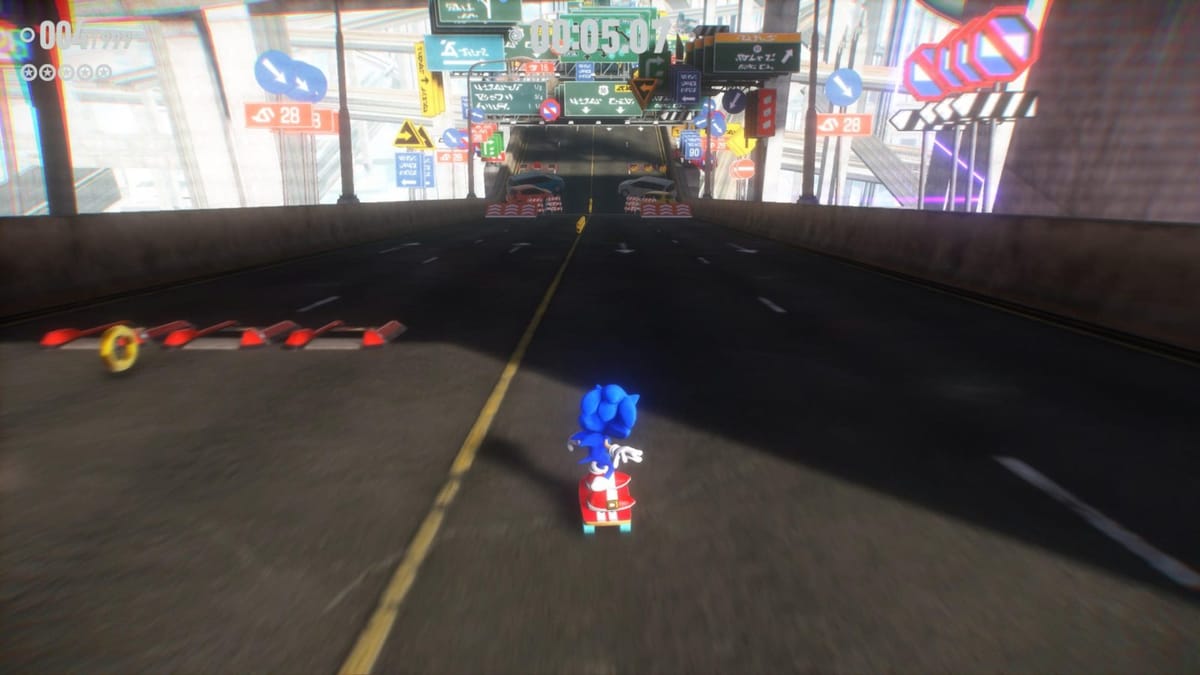
Sonic Frontiers just got its first update, so Editors Jack Zustiak and David Flynn head back to the Starfall Islands to see what’s new. We’ve got a few cosmetics, modes, and quality of life features to go over, so let’s check out the Sights, Sounds, and Speeds.
David:
First up: you can now do bulk upgrades with Elder Coco. As someone who went through the arduous process of getting all stats to level 99 one by one, I’m glad no one ever has to do that again. In the main game, you also can now find music notes around the islands. These will unlock new tracks in the jukebox, accessed by holding right on the D-Pad. Picking a song from the list will have it play in the background as long as you’re not in combat. There’s a huge selection of songs to choose from, including deep cuts like Knight of the Wind or Dry Lagoon. You’ve got rocking tunes from almost all of Sonic’s history, with the original two Genesis titles being oddly left out. I appreciate the songs on offer, especially the more obscure ones, but excluding the first two games entirely feels like a weird misstep.
This update introduces two endgame modes accessed from the title screen: Cyberspace Challenges and Battle Rush. Both are time trials, focusing on Cyberspace levels and combat respectively. Cyberspace Challenges have you run through each level on every island with the goal of getting a cumulative S rank. The final challenge requires you to do every single level in the game in a row. It’s a nice cap off to the game, even if that final challenge stresses me out and I keep getting asterisks on my time for whatever reason. Also, it cements my opinion that there is only one truly bad Cyberspace level, and that’s the only one with drifting.
The Battle Rush, meanwhile, feels a bit off. Instead of getting big combos or dealing a bunch of damage, your score here is entirely time based. I don’t think this is a great fit for the combat system, since many of Sonic’s moves take a while to execute. Because of this, I mostly stuck with the spinning attacks to build up the Phantom Rush meter and rely on that. It’s less like mastering the mechanics, and more like just hitting certain button combinations as fast as possible. These trials are also island based, though I have not completed all of them yet to see what the final challenge is.
Jack:
Typically when a game receives an update, we think about it as an addition. Any addition to Sonic Frontiers in particular is important to take note of, as the people behind the game describe it as the “cornerstone” for the future of Sonic games. Whatever they add or change to that cornerstone may have long-term implications on how the developers see the game and the direction they’re taking with Sonic as a whole.
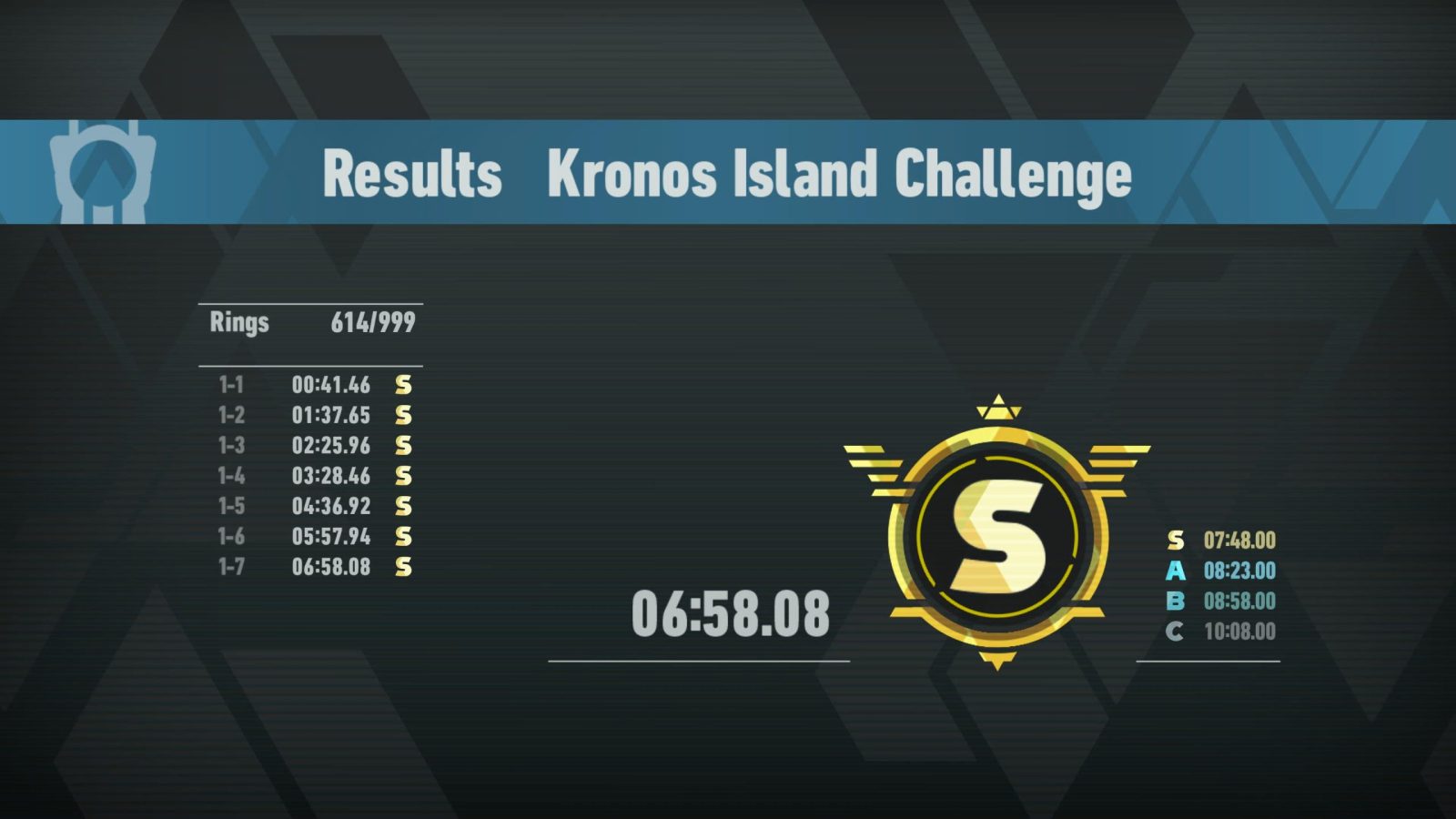
While the new Sonic Frontiers update, “Sights, Sounds, and Speed” technically does add to the foundation Frontiers laid, I don’t strictly see it that way. This update mostly alters and recontextualizes what already exists. In fact, rather than adding to the foundation Sonic Frontiers laid, playing through this update primarily made me consider both the strengths of the systems in place as well as some structural weaknesses.
Although Sonic Frontiers may be seen as a singular cornerstone, that is not obnoxiously specific enough for me. Instead, I’d say the foundation Frontiers laid rests on three cornerstones that the individual additions of this update correspond to. I don’t know if a building with three cornerstones would be structurally sound, but I can only strain this metaphor so far.
I’ll go over what I consider to be the three primary additions offered by this update: the Battle Rush, the Cyber Space Challenge, and the collectible music in the overworld. The update also adds in a few other things like a Photo mode and an extra difficulty, I just don’t have much to say about those beyond a “that’s nice.”
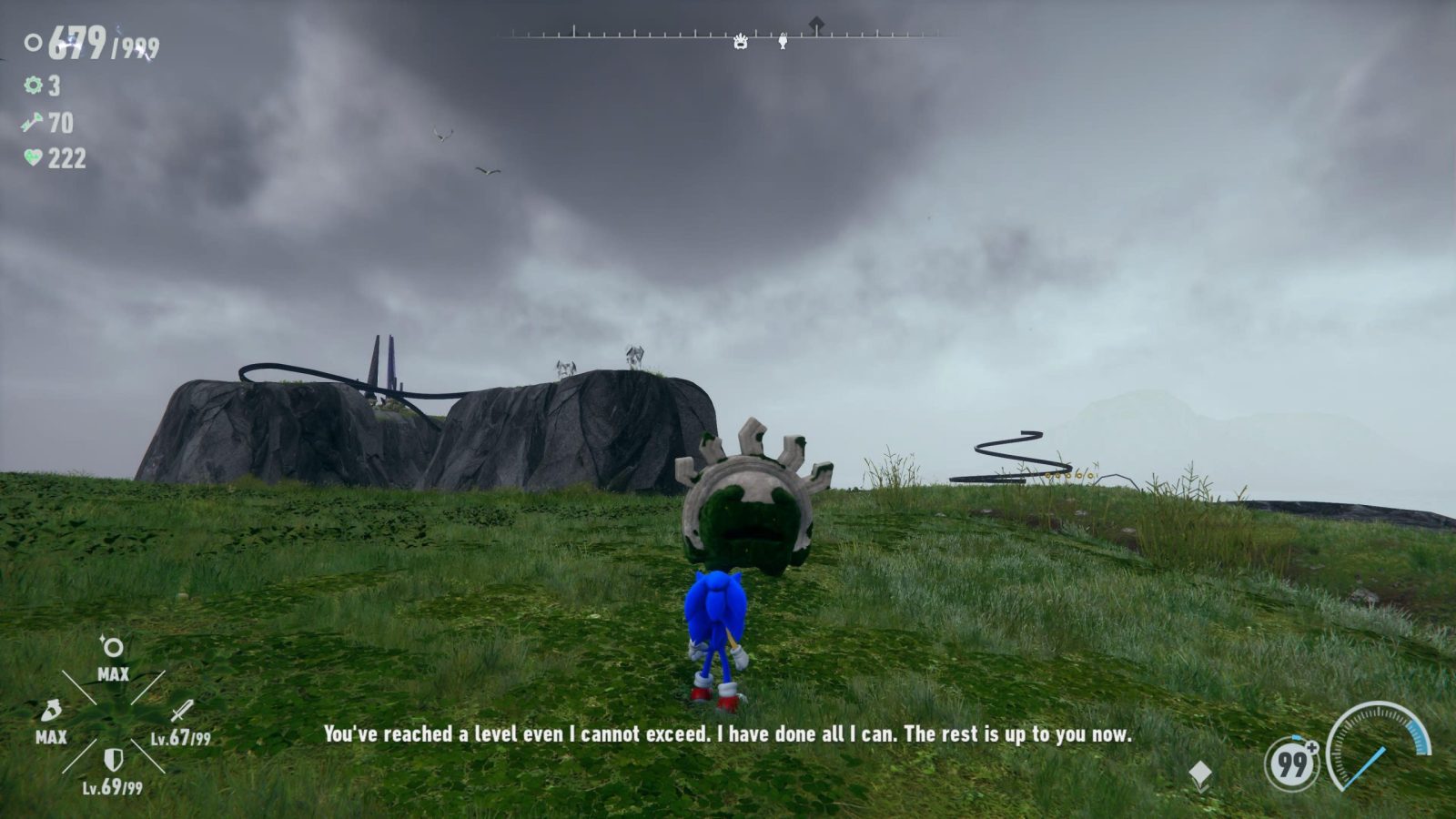
Battle Rush mode focuses on the combat. This mode throws Sonic into a gauntlet of enemy waves that need to be cleared as quickly as possible. The faster you finish, the better the rank you receive.
Frontiers spent a lot of effort on fleshing out the combat – its take on the concept serves as the game’s most expansive new mechanical addition to Sonic as a whole. The final result ends up being a lot of things, but I hesitate to say any of those things include “built for speedrunning.” Over the course of the game Sonic gains access to a wide variety of combat moves, and many of them involve long animations and start-up times. Taken as it is, the combat values flashiness over something snappy. When you’re running across an open world and casually disposing of enemies, that fits just fine. When you remove the combat mechanics from a more laid back pace, however, the approach gets more questionable.
The nature of how the combat functions places the speedrunning angle of Battle Rush mode at odds with its core appeal. You simply don’t have the time to watch Sonic zig-zag around the screen until he decides he finally wants to land a kick, or pose around in the air before he fires off energy orbs. You need to be very careful while playing now, because any wrong input could penalize you with a major time loss. Using the wrong move equates to stepping on a mine in a minefield full of time-wasting moves.

To be fair, Battle Rush poses an interesting challenge due to its speed focus. That may in part be due to the minefield nature of Sonic’s moveset, but also what is likely the intended appeal: figuring out what moves work best for disposing of each enemy. On its own, that’s not a bad idea.
My issue lies in what speed does to the combat experience. To get S ranks, you will likely find yourself spamming a lot of Sonic’s “Cross Slash” projectiles or other easily exploitable moves because it’s so quick and effective. In a speedrun environment, you have little incentive to use most of Sonic’s arsenal. In fact, it’s frustrating if you accidentally do use something suboptimal. Focusing on speed alone fails to play fully to the strengths of the combat system.
For similar reasons, it shocks me that they require you to read a save file before entering this mode. Basically, the game reads your stats from your Sonic in the main game in order to apply them to Battle Rush Sonic. This makes a huge difference in how realistic it can be to get a good ranking. It makes no real sense to even attempt this mode before you’ve maxed out Sonic as far as the game allows. Rather than force you to go through the trouble, the developers really should just automatically set Sonic at what they believe to be a reasonable power level and balance the ranking system around that.
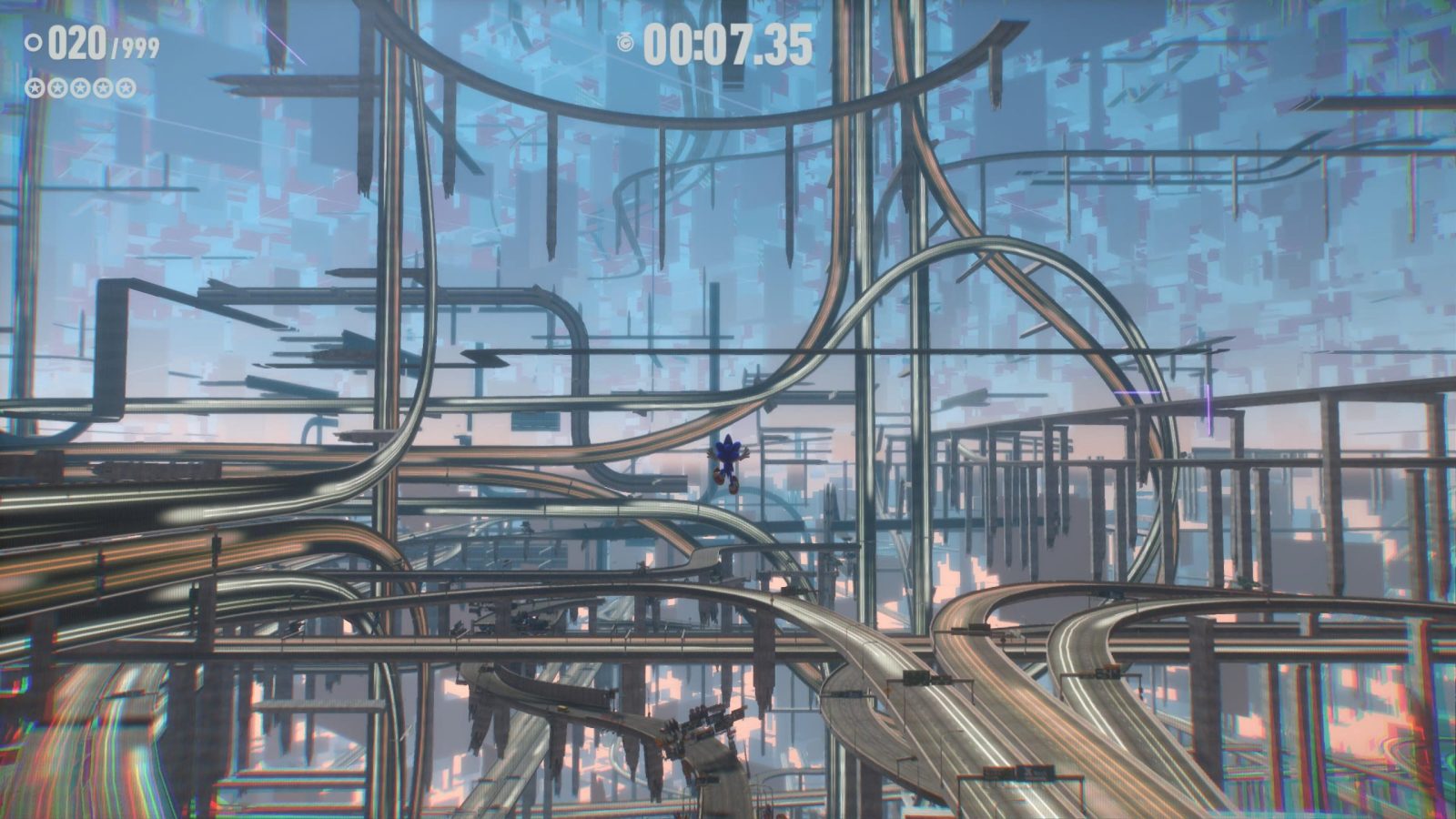
Personally, I want to see a system that balances the strengths of the combat a little better. A system that awards you points for using certain moves, maintaining combos, and defeating enemies quickly makes a lot more sense to me. As it is now, combat should not boil down to speed alone. A new expansion for rankings takes a lot of extra work of course, but if combat is here to stay for the long haul, I believe that work to be well worth the investment.
The Cyber Space Challenge functions similarly to Battle Rush, just with the game’s Cyberspace stages needing to be completed as fast as possible in a marathon format instead of enemy encounters. On paper, this changes very little – your goal was already completing these levels as quickly as possible from the beginning. In practice, the experience feels surprisingly different. The marathon format adds a layer of endurance to this. When you play these levels on an individual basis, you can obsessively restart for every minor mistake that you make. When you mess up now, you have to live with the consequences.
I appreciate the extra layer of challenge here. I found the process earning S ranks on these levels individually to be a slightly disappointing experience. For stages outside of 1-2, you don’t need to try very hard. By requiring you to complete stages in succession, this method tests mastery in a way the individual system does not.
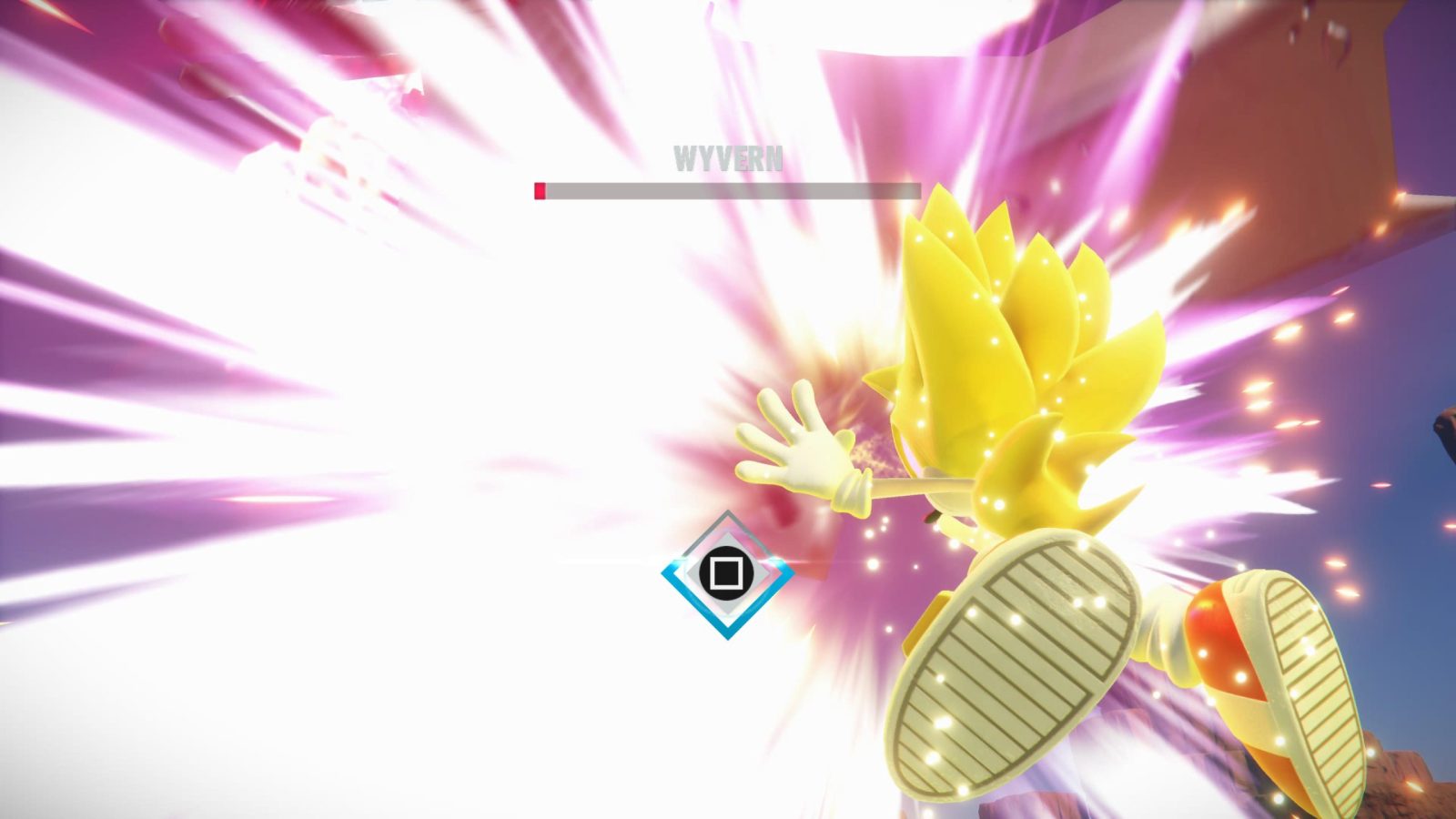
Still, the marathon format does not represent a perfect compromise in my mind. Part of why I enjoy speedrunning levels in a Sonic game comes from the low time commitment aspect of it. I like focusing on one relatively short task and drilling down on it until I get it right. I don’t always want to spend a half hour playing through a collection of wildly different stages in a row. It’s fine for this endurance mode to exist, it just shouldn’t come at the cost of making the stages individually challenging. The new difficulty included in this update also tightens up the S rank standards, but unfortunately ties them exclusively to that mode. If anything, a more challenging individual ranking system should directly lead into the Cyber Space Challenge format. Sonic Frontiers already offered an Arcade Mode that allows you to play these levels individually, which is great for practice, but I also don’t think any of them are challenging enough by the normal standards where that practice helps out a ton.
Lastly, this update brings in a bundle of music from past Sonic games that you can play while exploring the overworld. Speaking to just the broad concept, this is a great idea. Open world game soundtracks tend to focus on ambience, so the soundtrack falls into the background instead of being prominent. Sonic Frontiers’s soundtrack has a stronger presence than most, but when I think of Sonic, I think of something even more prominent and in your face. Sometimes you just want something cool and catchy, and pulling from Sonic’s past satiates that desire.

As far as the selection goes, the choices are generally good if a little conservative. Most of Sonic’s most famous themes make an appearance. I get the sense that for some of the more unusual choices, they were simply pulling for songs that roughly fit the themes of the various islands (lava levels, grassy areas, etc.) over fan favorites. If anything, I would have liked for them to dig deeper on that angle; some soundtracks like Sonic Forces would fit Frontiers well and greatly benefit from being in a game where you can hear the entire composition. Sonic diehards will likely feel the absence of any songs from the first two Sonic games, which you can likely chalk up to licensing issues. Sega probably has to pay a fee to use them that they’d rather not for a free update. While understandable, it’s unfortunate to see the beginnings missing in a tracklist that otherwise runs through all of the key highlights of the character’s history.
From a gameplay perspective, the music also introduces new collectibles around the game’s many explorable islands. The more music notes you grab, the more songs you add onto your playlist.
I looked forward to this part the most. After finishing Frontiers, a major weakness of the “open zone” format stood out to me: you have very little incentive to keep playing. Wide-open maps like this often incentivize the player to stay in them for a long time, whether that’s through making them a playground or giving you a lot of busywork. Frontiers aimed more towards the latter approach. Due to the way the open zones work, it constantly funnels you towards objectives by locking you into small playable sequences. Even on the busywork front, however, it’s a little short-lived. This weakness especially stands out now that you have access to all of this music. It’s great to have something to listen to, but I’d like an incentive to continue playing the game while listening to it, too.
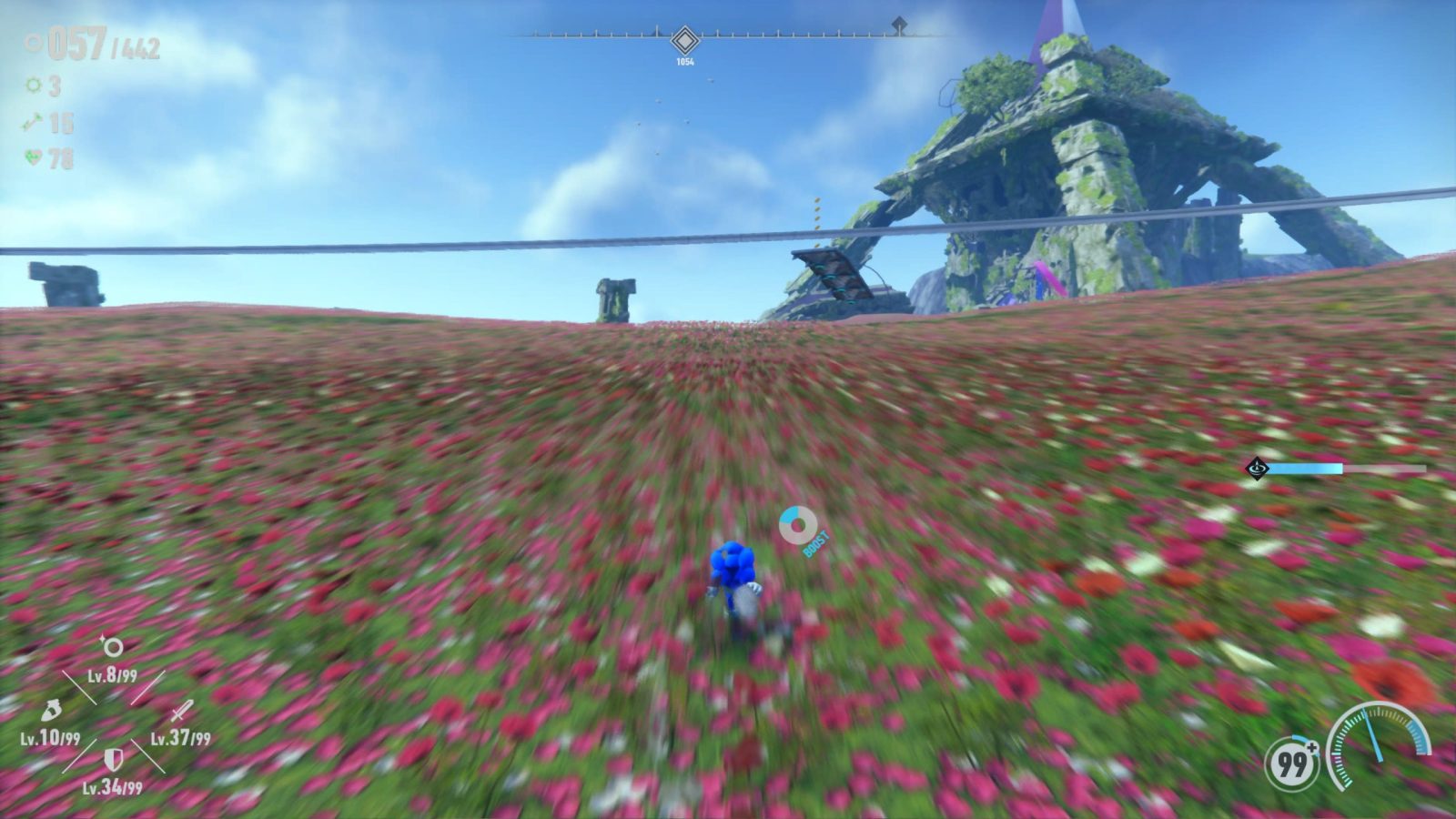
The music notes add some incentive to explore the islands all over again, just not much of it. I cleaned them all up in under an hour. It was a fun hour, but once it was over, I was again left with little reason to continue exploring. Given that I collected all of this extra music, I found it a shame that I wouldn’t listen to it. Here’s hoping that the upcoming updates give me more of an opportunity.
Overall, I appreciate that the developers are adding anything at all for free. What they added just doesn’t solve any of the overlying weaknesses of the game. If anything, it highlights them. That’s more of an observation than me characterizing this update as a bad thing.
The release of Sonic Frontiers last year started a sprint in the right direction, so I see these updates as a continuation of that sprint. In a sense, both the players and developers are in this Sonic Frontiers journey together. The developers will expand on the game as a testing ground for later adventures, while the players will figure out what they like. Like the update itself, this is a marathon, and I’m excited to continue the pace with the next update.

